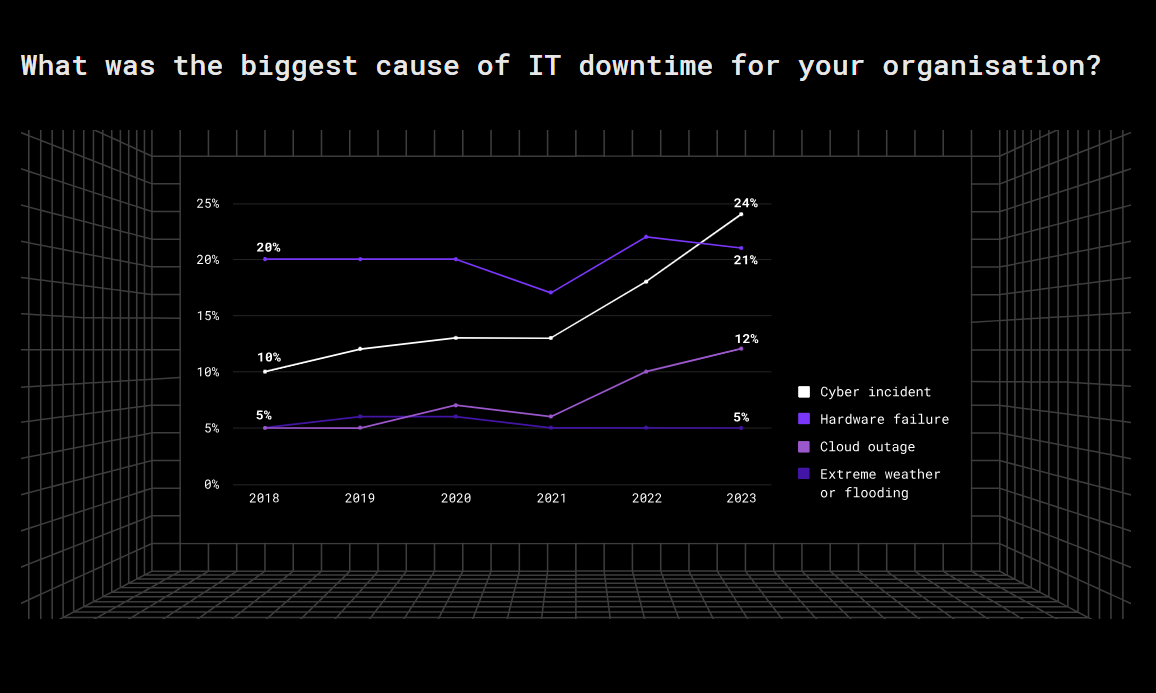Organisations have become more reliant than ever before on their IT systems, with two-thirds of respondents to a Databarracks survey reporting that they would not survive a day without them.
Some 68% of respondents to the vendor's Data Health Check research report revealed that they could survive less than 24 hours. This compares with just 46% in 2017, marking a significant increase in dependence on technology.
Commenting on the findings, Databarracks managing director, James Watts, said: “Organisations are finding themselves in an increasingly difficult position. On one hand, the risk of IT downtime is significantly increasing due to cyber causes. On the other hand, digital transformation efforts have led to a greater dependence on technology. Technology is so fundamental to the way organisations now function that the effect of IT downtime is amplified."
Databarracks advises businesses to build resilience by first addressing the cyber threat, and improving recovery methods. The provider also recommends assessing what can be done to keep the business operational without IT. As processes have been automated by technology, the old manual methods are often forgotten as they are neither fast nor efficient, but they can keep the business operational at a minimum level.
“This is one reason why we would always recommend including manual workarounds in DR plans. As the incidence of cyber attacks continues to rise, this is more important than ever, Watts added. “In business continuity, we talk about the maximum tolerable period of disruption. This is the period after which the viability of the organisation would be threatened. Each organisation will have a different MTPD and, as we have seen from our research, it is decreasing over time.”
MTPD is central to BC planning, and should be non-negotiable, he added: “Determine your MTPD – and make it a hard line. Once you allow wiggle room, you will miss your recovery objectives. Ultimately, deciding on what outcome is unacceptable to you will help you put effective boundaries in place.”
Chart source: Databarracks Data Health Check 2023
Printed Copy:
Would you also like to receive CIR Magazine in print?
Data Use:
We will also send you our free daily email newsletters and other relevant communications, which you can opt out of at any time. Thank you.











YOU MIGHT ALSO LIKE